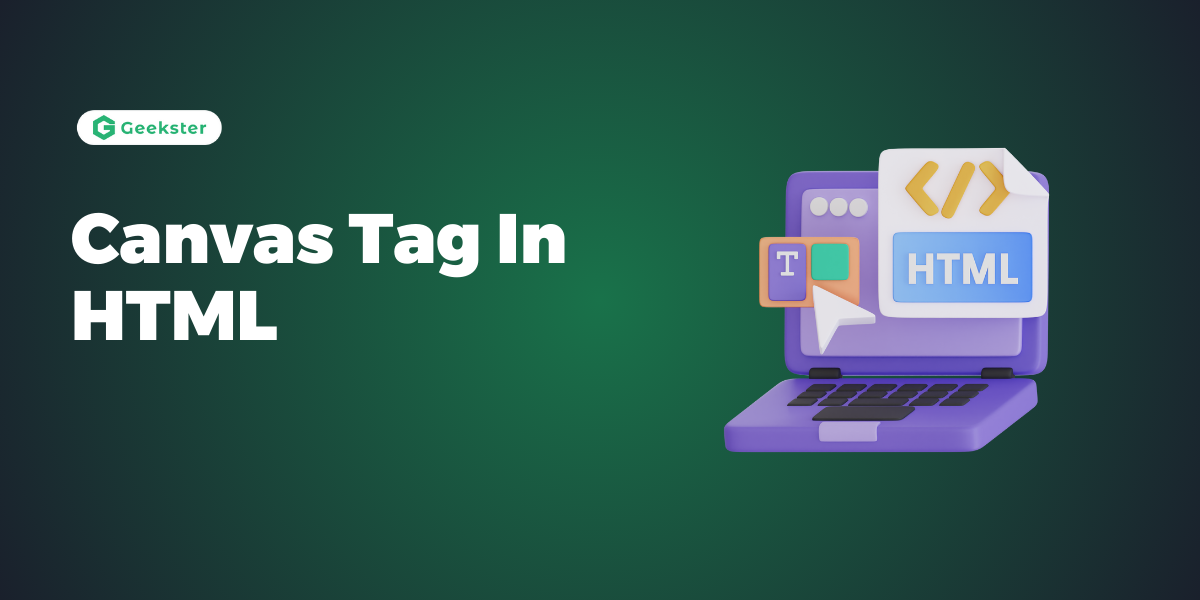Introduction
The <canvas> tag in Html enables developers to build dynamic, interactive and visually appealing graphics for their web-pages. The <canvas> tag, was introduced in HTML5 and has transformed the web’s graphic design and displays. The <canvas> tag allow developers to use javascript to create images , animations, and interactive content on web-pages. This element is only a container for graphics, and it needs javascript to render it . It works alongside the Canvas API, which offers methods and properties for drawing and manipulation visuals.
Example
<canvas id="myCanvas" width="400" height="200"></canvas>
<script>
var canvas = document.getElementById("myCanvas");
var ctx = canvas.getContext("2d");
// Canvas dimensions
var canvasWidth = canvas.width;
var canvasHeight = canvas.height;
// Rectangle dimensions
var rectWidth = 50;
var rectHeight = 50;
// Calculating top-left corner position for centering the rectangle
var rectX = (canvasWidth - rectWidth) / 2;
var rectY = (canvasHeight - rectHeight) / 2;
ctx.fillStyle = "rgb(200, 0, 0)";
ctx.fillRect(rectX, rectY, rectWidth, rectHeight);
</script>
Output
Features of Canvas Tag In HTML
It offers a wide range of features which can make it an ideal choice for creating dynamic graphics on web. Some of the key features of <canvas> tag are given below:
- Dynamic Graphics : The tag allows developers to create a dynamic graphics that can be updated in real-time.
- Interactive Content : It enables developers to create an interactive content , such as games, animations and simulations.
- Scalability : The <canvas> tag helps to generate visuals that may be scaled up or down without losing quality.
- Cross-Browser Compatibility : All recent browsers accept the <canvas> tag and making it reliable choice for creating cross-browser compatible graphics.
Uses of canvas Tag
The <canvas> tag has a wide range of uses, including:
- Gaming: The tag is commonly used in interactive games, including puzzles, platformers, and strategic games.
- Data Visualization: The element enables interactive data visualizations, including charts, graphs, and infographics.
- Animations: The element creates animations, including loading, transitions, and effects.
- Art and Design: The tag enables interactive art and design, including generative art, installations, and digital sculptures.
Benefits of canvas Tag
Below are the benefits of canvas tag
- Improved User Experience: The element enables developers to build dynamic and interesting visuals that improve the user experience.
- Increased Engagement:The element allows developers to build interactive content, increasing user engagement and interaction.
- Flexibility and Customization :The element enables developers to build customized images and animations that meet individual demands and constraints.
- Cross-Browser Compatibility :The element is compatible with all current browsers, making it a solid option for developing cross-browser graphics.
Conclusion
The <canvas> tag has transformed how visuals are displayed on the web. Allowing developers to draw and edit pictures using JavaScript offers up a world of possibilities for building dynamic, interactive, and visually appealing content. The element is a flexible and effective tool for engaging users in interactive games and producing interesting data visualizations. Its diverse set of capabilities, including scalability and cross-browser compatibility, make it an essential component for modern web development. Whether you are a seasoned developer or just starting out, knowing the element may substantially enhance your online projects.
Frequently Asked Question
<canvas> tag be used for creating animations? Yes, the <canvas> tag can be used to create animations. This involves repeatedly clearing and redrawing the canvas content to create the illusion of movement
<canvas> element compatible with all browsers? The <canvas> element is supported by all modern browsers, including Chrome, Firefox, Safari, Edge, and Opera. It is also compatible with most mobile browsers.
<canvas> tag be used for 3D graphics? Yes, the <canvas> tag can be used for 3D graphics through the WebGL API. WebGL (Web Graphics Library) is a JavaScript API that enables rendering interactive 3D and 2D graphics within any compatible web browser without the use of plug-ins.

